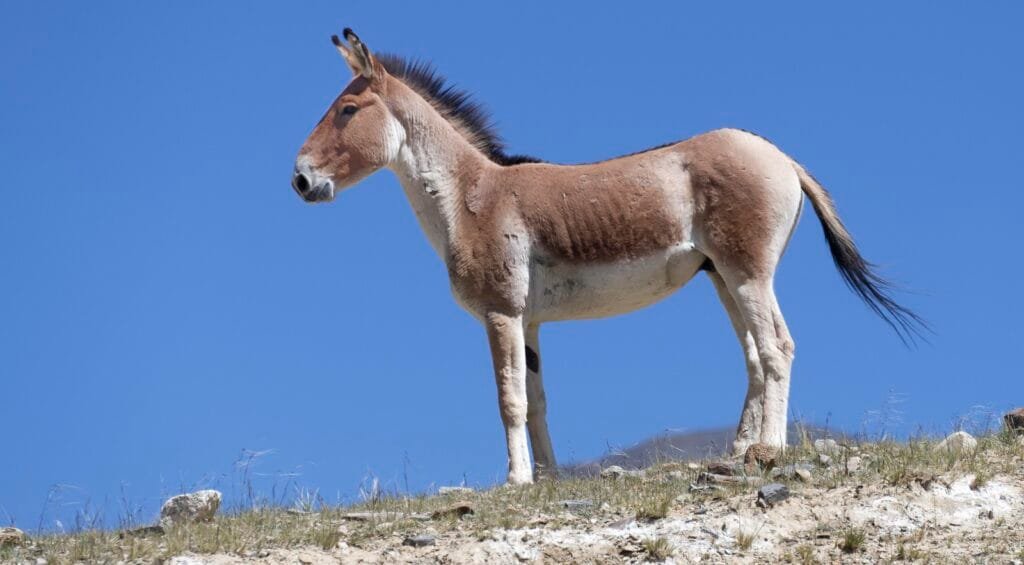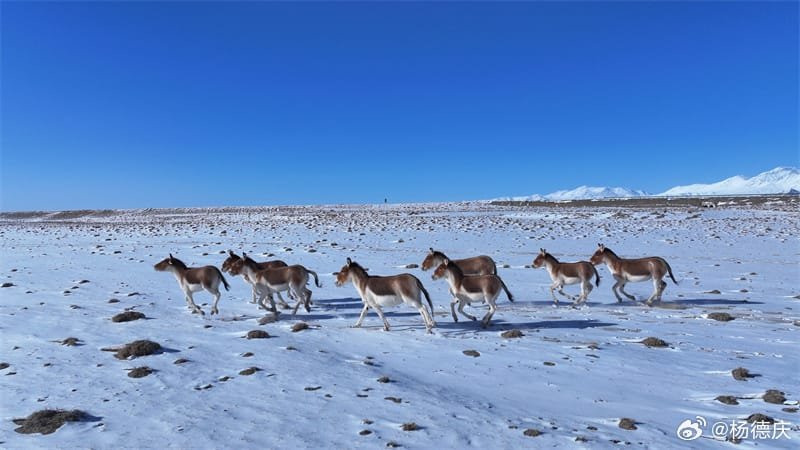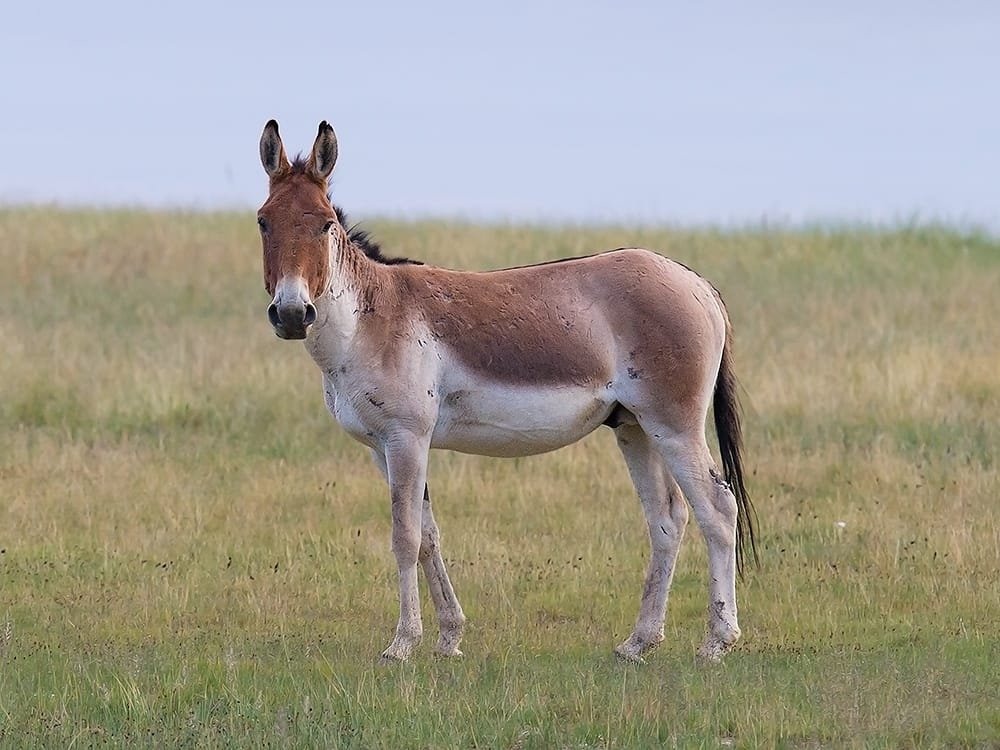Distribution and Habitat
The Tibetan wild ass, commonly referred to as the kiang, predominantly inhabits the vast expanses of the Tibetan Plateau. This unique region encompasses parts of several countries, including China, India, Nepal, and Pakistan. Within this geographical range, kiangs have a significant presence across various provinces in China, particularly in the Tibet Autonomous Region, where they thrive in high-altitude environments. In India, they can be found in the Ladakh region, while populations are also observed in the remote areas of Nepal and Pakistan, where the rugged terrain provides suitable habitats.
Kiangs are primarily found in diverse terrains that include alpine meadows, expansive steppes, and arid landscapes. Their adaptability to harsh environments is evident as they are well-suited for the cold, sparse areas of the Tibetan Plateau. These habitats are characterized by limited vegetation, yet they offer ample grazing opportunities which are essential for the kiang’s survival. The open terrains of the plateau facilitate the kiangs’ ability to detect predators such as wolves and leopards, which is crucial for their safety.
Among their preferred habitats are rugged mountain ranges where rocky outcrops provide shelter and vantage points for spotting potential threats. Kiangs also favor areas with a mixture of grasslands and scrub, allowing them to forage effectively while still being vigilant against predators. In summary, the distribution and habitat of the kiang reflect their adaptation to high-altitude ecosystems, where they inhabit grasslands and steppes, utilizing the open spaces for grazing and predator detection. This remarkable adaptability underscores the importance of conserving their habitat to ensure the survival of this unique species.

Physical Characteristics
The Tibetan wild ass, commonly known as the kiang, is distinguished by its impressive physical characteristics, making it one of the largest species within the wild ass family. Typically, kiangs weigh between 250 and 440 kilograms, with most individuals falling within this substantial weight range. This significant mass supports their robust and powerful build, which is essential for survival in the harsh environments of the Tibetan plateau.
In terms of size, kiangs can reach a height of approximately 1.3 meters at the shoulder, showcasing their strong and muscled physique. Their limbs are long and sturdy, allowing them to traverse difficult landscapes at high altitudes effectively. The coat of the kiang is another notable feature; it is typically a rich reddish-brown, featuring lighter patches, particularly on the face and legs. This coloration not only enhances their visual appeal but serves an essential function, blending seamlessly into the dry, rugged terrain of their habitat, which aids in protection from predators.
Moreover, kiangs possess unique adaptations that facilitate their survival in extreme conditions. Their large lungs are tailored for efficient oxygen exchange at high altitudes, while their hooves are compact and designed to provide stability and support on rocky surfaces. Unlike some other wild ass species, kiangs have a shorter mane and a more pronounced dorsal stripe, which sets them apart visually. These distinguishing features help researchers identify and study their behaviors and patterns in the wild.
The lifespan of kiangs in their natural habitat can extend up to 20 years, a testament to their adaptability and resilience. Understanding these physical characteristics provides valuable insights into the ecology and behavior of the kiang, establishing its role in the delicate balance of its environment.
Behavior and Diet
The Tibetan wild ass, known as the kiang, exhibits fascinating social structures and feeding habits that are crucial for its survival in the harsh environments of the Tibetan Plateau. Kiangs demonstrate a range of herd behaviors, often found in groups that can vary significantly in size. These herds may consist of small family units or large gatherings, which can encompass up to 400 individuals. The formation of such large herds not only enhances their social interactions but also offers advantages in terms of protection against predators. In these groups, individual kiangs can engage in social grooming and play, fostering strong bonds within the herd.
In terms of diet, kiangs are primarily herbivorous, favoring a diet that consists mainly of grasses, which are abundant in their natural habitat. They have adapted to nibble on various grass species that thrive in the high-altitude regions they inhabit. While grasses make up the bulk of their nutritional intake, kiangs are known to occasionally consume sedges, which can provide additional nutrients. Their feeding habits are specifically tailored to their environment, leading to a limited consumption of forbs and shrubs, which are less accessible in their preferred ecosystems.
Notably, kiangs have developed unique defense mechanisms to protect themselves against potential predators, such as wolves and other carnivores. One of their key strategies involves forming tight defensive circles. When threatened, kiangs will huddle together, presenting a united front to deter predators and safeguard vulnerable individuals, such as young foals. This behavior not only enhances their chance of survival but also exemplifies the cooperative nature of the species. The combination of their social structure and dietary strategies underscores the kiang’s remarkable adaptability to the challenges posed by their rugged environment.

Conservation Status
The conservation status of the Tibetan wild ass, commonly known as the kiang, is currently classified as ‘least concern’ by the International Union for Conservation of Nature (IUCN). Despite this relatively favorable status, the kiang faces several challenges that threaten its long-term survival. Habitat loss, primarily due to human encroachment, agriculture, and the expansion of infrastructure, poses a significant risk to these animals. The degradation of their natural grassland ecosystems has forced many kiangs into fragmented populations, which can impede their ability to thrive and reduce genetic diversity.
Competition with livestock, particularly sheep and goats, is another pressing concern. As herding practices increase in the regions inhabited by the kiang, the availability of forage and water sources dwindles, leading to increased stress on their populations. This competitive pressure is especially pronounced in areas where human population density is high, exacerbating the challenges that the kiang faces.
Population estimates indicate that approximately 90% of the kiang population resides in China, primarily within the vast Tibetan Plateau. Current estimates suggest that there are around 50,000 kiangs in total, but precise numbers can vary. Understanding these statistics is crucial for conservationists aiming to implement effective preservation strategies. Monitoring population dynamics and habitat conditions is an ongoing necessity to ensure that conservation efforts can adapt to changing environmental circumstances.
In conclusion, while the kiang is not currently facing immediate extinction risks, the ongoing threats of habitat loss and competition with livestock demand focused conservation initiatives. Collaborative efforts from governments, conservation organizations, and local communities are essential to safeguard the future of the kiang and maintain its ecological role on the Tibetan Plateau.






